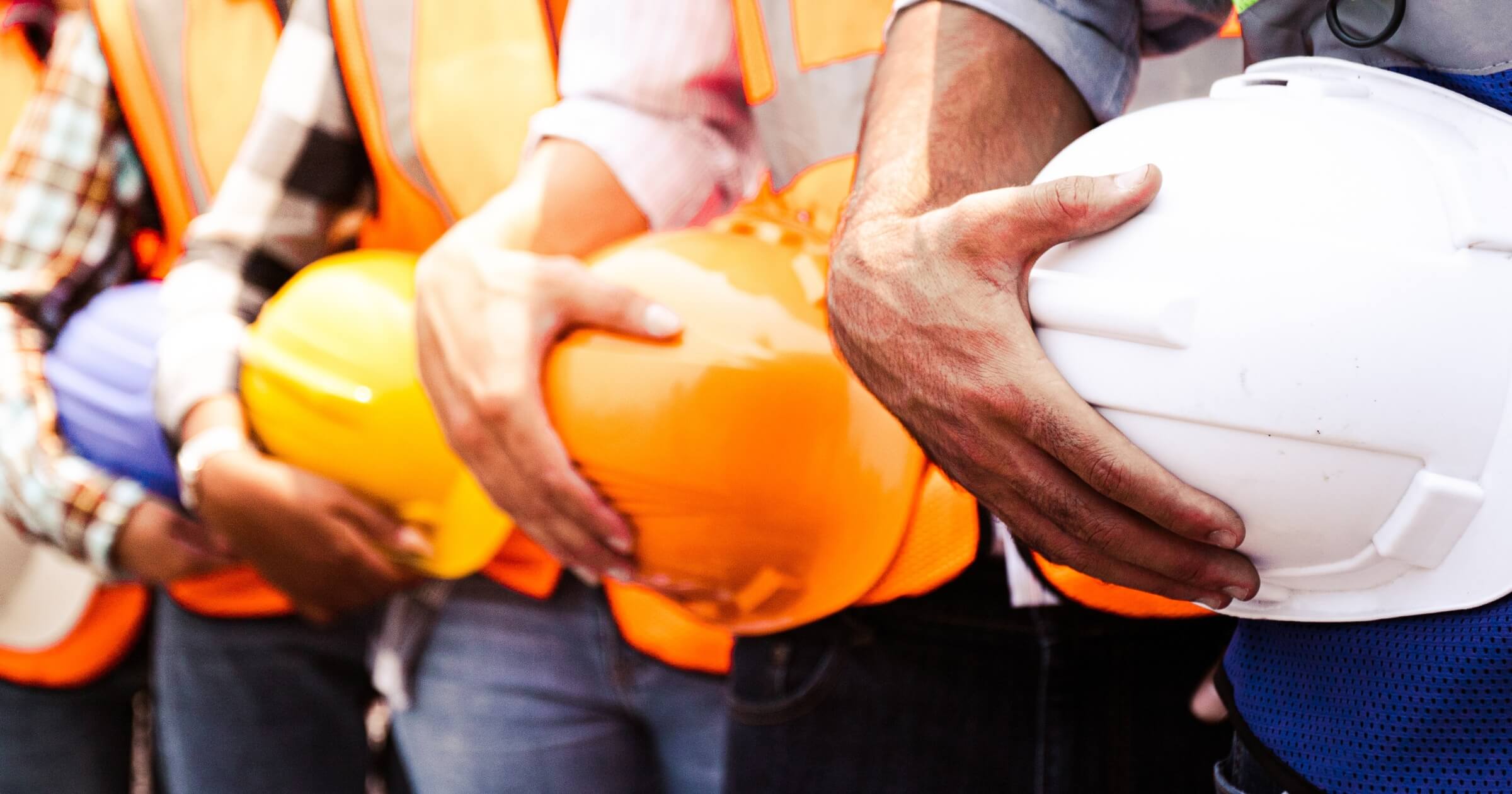Across North America, trade workers take on some of the toughest and most hazardous roles in the workforce, from scaling rooftops to operating heavy machinery in unpredictable conditions. According to the U.S. Bureau of Labor Statistics, construction and extraction occupations accounted for 976 fatal work injuries in 2022 alone, with similar trends seen in Canada’s most labor-intensive sectors. To help shine a spotlight on high-risk trades, we’ve rounded up the most dangerous trade jobs in North America based on fatality statistics, the nature of the work, and common incident causes.
1. Truck drivers (including delivery and freight)
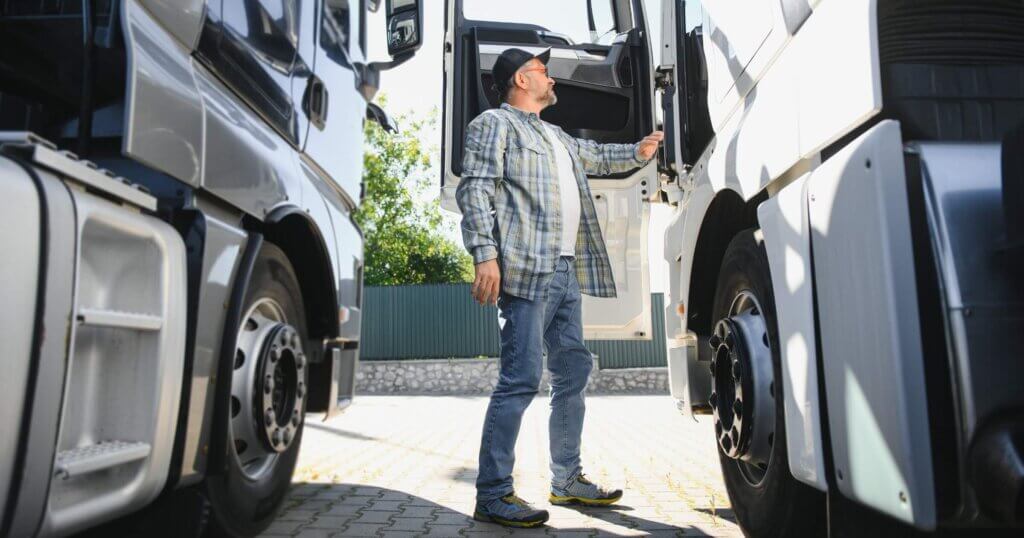
Photo courtesy of Shutterstock.
- Deaths/Fatal incidents per year: ~900+ (U.S.)
- Common causes of incident: Traffic collisions, fatigue, loading accidents
Truck drivers may not always be viewed as trade workers in the traditional sense, but they play a critical role in construction, logistics, and supply chains, and face serious risks every time they get behind the wheel. In 2022, truck drivers accounted for over 900 workplace fatalities in the U.S., making it the single deadliest occupation by total deaths, according to the Bureau of Labor Statistics.
Drivers often endure long shifts with limited rest, navigating congested highways, harsh weather, and unpredictable road conditions. Fatigue is a leading factor in crashes, and the physical strain of loading and unloading heavy cargo only adds to the danger. Despite technological improvements like lane assist and collision warning systems, trucking remains one of the riskiest jobs, not just because of what happens on the road, but also due to what’s demanded of it.
2. General construction laborers
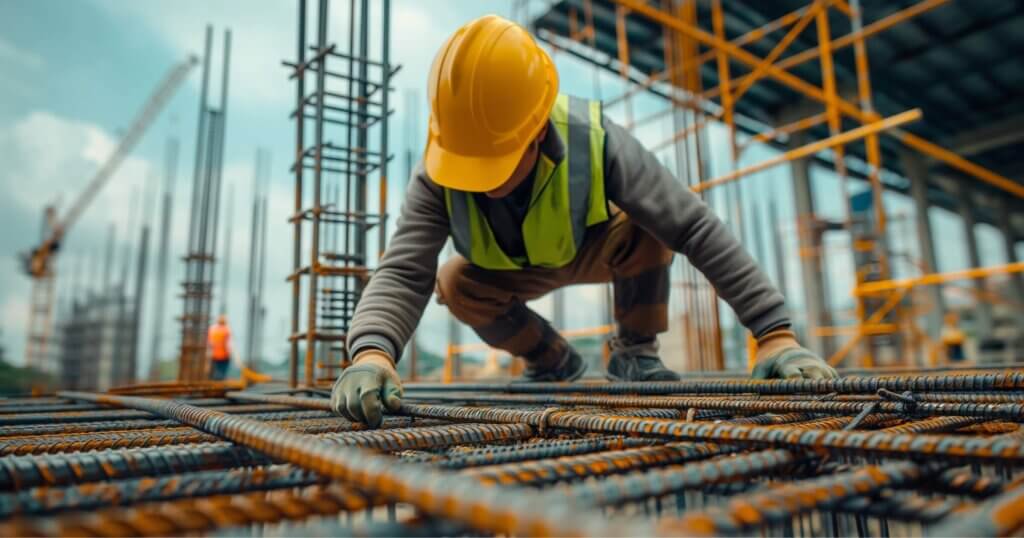
Photo courtesy of Shutterstock.
- Deaths/Fatal incidents per year: ~300+ (U.S.)
- Common causes of incident: Falls, struck-by incidents, machinery accidents
Construction laborers are the backbone of most building projects, performing everything from site prep and concrete pouring to demolition and material handling. But with that versatility comes exposure to some of the most dangerous conditions on a jobsite. In 2022, the U.S. Bureau of Labor Statistics reported over 300 fatal injuries among construction laborers. This makes construction laborers the second most dangerous trade job on this list.
Workers often navigate uneven ground, operate near heavy equipment, and work in close proximity to falling materials, open trenches, and moving vehicles. Despite strict safety protocols, the fast-paced nature of construction and the constant pressure to meet deadlines can increase the risk of accidents. It’s a physically demanding job that requires strength, situational awareness, and access to proper training and protection.
3. Roofers
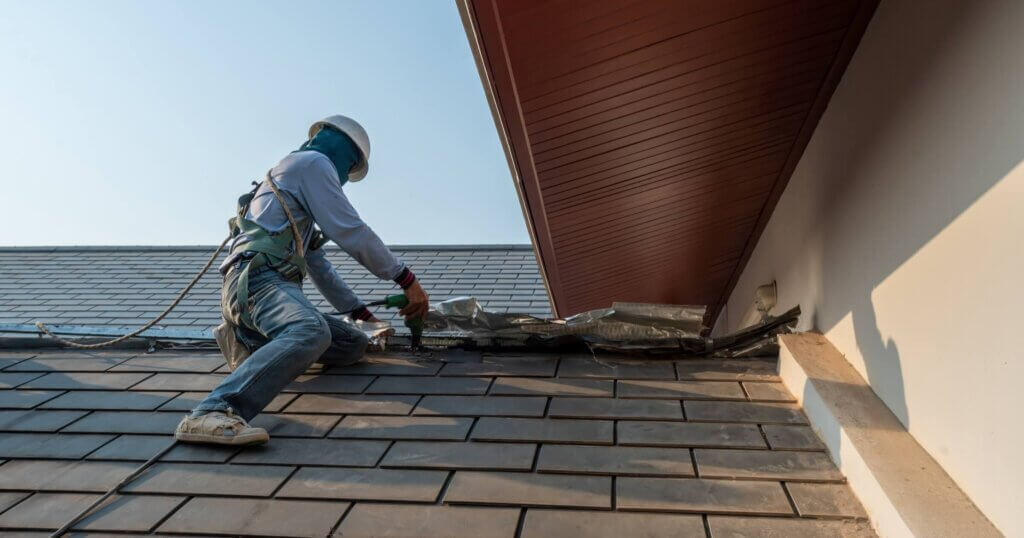
Photo courtesy of Shutterstock.
- Deaths/Fatal incidents per year: ~100+ (U.S.)
- Common causes of incident: Falls from height, ladder accidents, heat stress
Roofing is one of the most perilous jobs in the construction industry, and the numbers back it up. In 2022, the U.S. Bureau of Labor Statistics reported 104 fatal injuries among roofers, with falls accounting for the vast majority. Working several stories above the ground, often on sloped or unstable surfaces, roofers are constantly at risk of slipping, tripping, or losing balance.
The job involves installing and repairing roofs on residential, commercial, and industrial structures. Roofers frequently use ladders, scaffolding, and safety harnesses, but when that equipment is missing or misused, the consequences can be fatal. They also face exposure to extreme heat, cold, and wind, which not only increases physical strain but also reduces reaction time and focus. Despite improvements in fall protection standards, roofing remains one of the deadliest trades on the continent.
4. Loggers
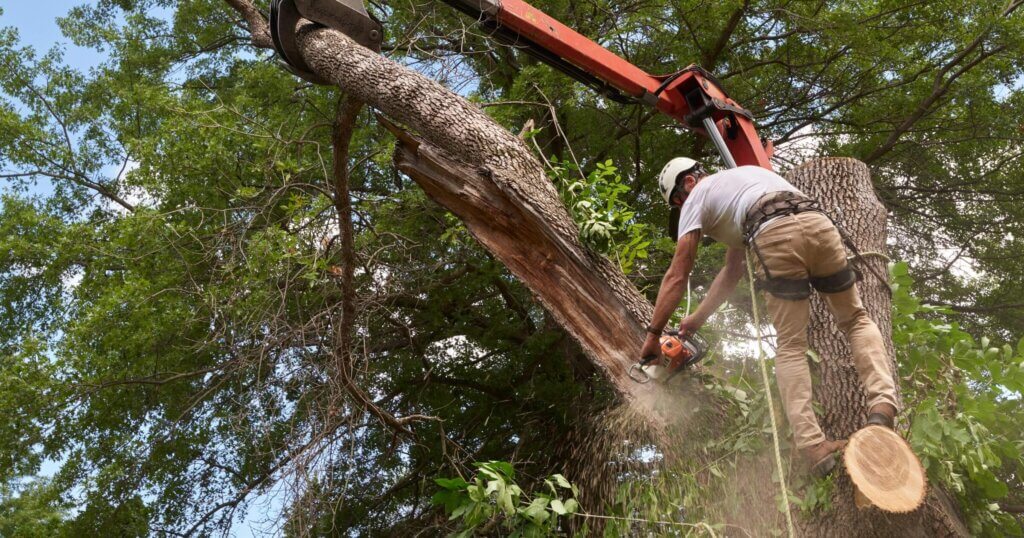
Photo courtesy of Shutterstock.
- Deaths/Fatal incidents per year: ~70–100+ (U.S.)
- Common causes of incident: Falling trees, chainsaw accidents, machinery malfunctions
Loggers face one of the most dangerous work environments in North America. Tasked with felling trees, trimming branches, and transporting massive logs, they often operate in remote forests with uneven terrain and unpredictable weather. The job involves powerful equipment like chainsaws, skidders, and harvesters, all of which pose serious risks if something goes wrong. The most common hazards include being struck by falling trees or limbs, equipment failures, and even entanglement in moving machinery.
According to the U.S. Bureau of Labor Statistics, logging consistently ranks at the top of the list for fatal injury rates, with a fatality rate of 82.2 deaths per 100,000 workers in 2022; more than 21 times the average across all industries. Despite advances in safety equipment and mechanization, the sheer nature of the work makes it extremely high-risk.
5. Maintenance and repair workers

Photo courtesy of Shutterstock.
- Deaths/Fatal incidents per year: ~50–100 (95 in 2022)
- Common causes of incident: Electrocution, falls, tool-related injuries
General maintenance crews keep buildings and facilities running by troubleshooting everything from flickering lights to jammed elevators. One day they’re deep inside an HVAC unit, the next they’re swapping out a high-voltage breaker or fixing a leaky roof, often with little downtime between tasks. That variety is exactly what makes the role so risky: danger can strike from multiple directions at once.
In the most recent Census of Fatal Occupational Injuries, 95 maintenance and repair workers were killed on the job in 2022, with falls, electrical shocks, and contact with objects or equipment ranking among the top killers. Tight spaces, energized systems, and a revolving toolbox of power tools demand constant vigilance and up-to-date safety training to keep these everyday problem-solvers out of harm’s way.
6. Ironworkers
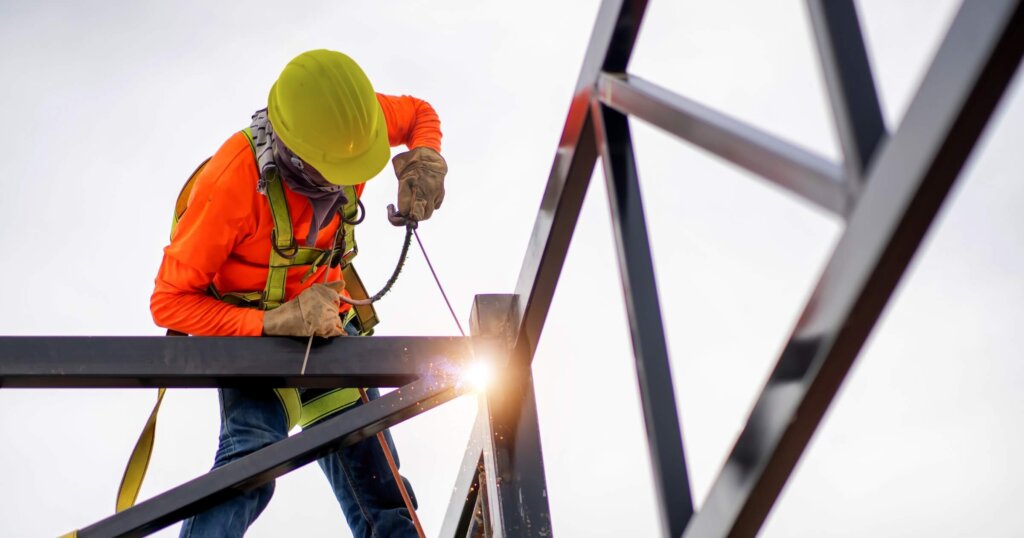
Photo courtesy of Shutterstock.
- Deaths/Fatal incidents per year: ~30–50 (U.S.)
- Common causes of incident: Falls, struck-by incidents, structural collapse
Ironworkers handle the steel and iron frameworks that support everything from skyscrapers to stadiums. Their job involves hoisting, positioning, and securing large beams, often hundreds of feet in the air, while navigating narrow platforms with minimal fall protection. According to the U.S. Bureau of Labor Statistics, ironworkers experienced 36 fatal injuries in 2022, most of them due to falls from height or being struck by heavy materials.
While personal fall arrest systems and improved training have helped reduce some of the risks, the nature of the job, working at extreme heights, sometimes in high winds or bad weather, keeps ironwork among the most dangerous trades jobs. Even small missteps or equipment failures can lead to catastrophic outcomes, especially when structural components are still being secured or welded into place.
7. Waste collection workers
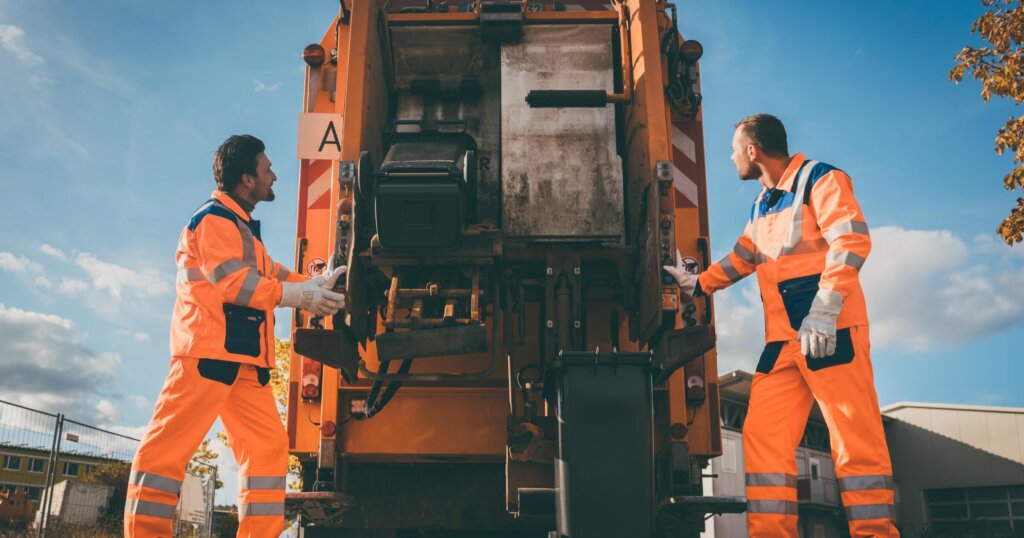
Photo courtesy of Shutterstock.
- Deaths/Fatal incidents per year: ~30–40 (U.S.)
- Common causes of incident: Traffic accidents, equipment failure, hazardous materials
Waste collection is not typically seen as one of the most dangerous trade jobs, but it’s far more dangeorus than most people realize. In 2022, the U.S. Bureau of Labor Statistics reported 34 fatal injuries among refuse and recyclable material collectors, putting this job consistently among the top ten most deadly in the country. A large number of these deaths result from vehicle-related accidents, including being struck by passing traffic or crushed by collection trucks.
The job requires workers to lift heavy loads, often in fast-paced or high-traffic environments, and ride on or near moving vehicles. Add in exposure to hazardous materials and improperly discarded sharps or chemicals, and the risk multiplies. Despite automation in some areas, much of the work is still done manually, making it a physically demanding and unpredictable job from start to finish.
8. Linemen
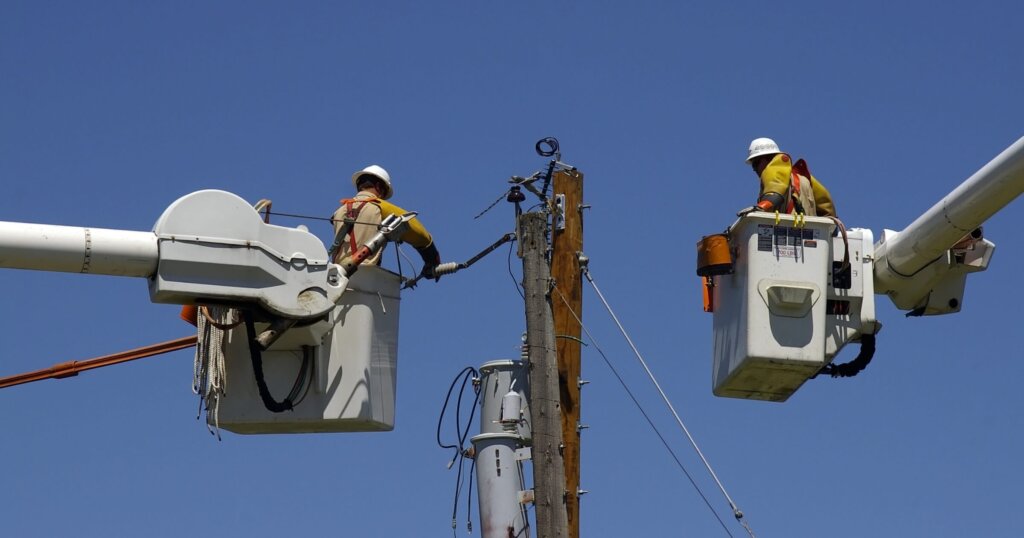
Photo courtesy of Shutterstock.
- Deaths/Fatal incidents per year: ~30–40 (U.S.)
- Common causes of incident: Electrocution, falls, struck by equipment
Linemen are responsible for keeping the electrical grid up and running, a critical but incredibly dangerous task. Whether restoring service after a storm or upgrading infrastructure, these workers often operate high off the ground on poles or bucket trucks, surrounded by high-voltage lines. According to the U.S. Bureau of Labor Statistics, 29 fatal injuries occurred in this trade in 2022, with electrocution and falls being the most common causes.
The job demands precision, focus, and fast decision-making, especially during emergencies when power must be restored quickly. Add in unpredictable weather, traffic hazards, and the constant threat of live electricity, and it’s easy to see why this role remains high on the list of fatal occupations. Even with rigorous training and safety gear, the margin for error is razor thin.
9. Welders and cutters
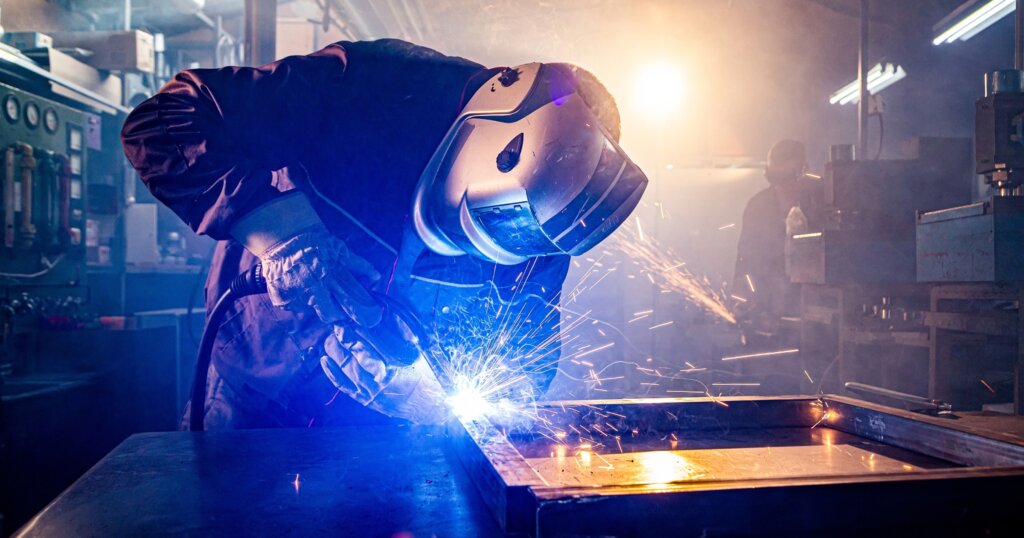
Photo courtesy of Shutterstock.
- Deaths/Fatal incidents per year: ~20–30 (U.S.)
- Common causes of incident: Burns, explosions, electrical accidents
Welders and cutters perform essential tasks in construction, fabrication, and maintenance, fusing metal parts using high-temperature equipment. But the job comes with serious hazards. In 2022, the U.S. Bureau of Labor Statistics reported 24 fatal injuries in this occupation, most linked to fire-related accidents, electric shock, or exposure to hazardous fumes.
Welding often takes place in tight or elevated spaces, where flammable gases and combustible materials are common. Without proper PPE, ventilation, and fire prevention protocols, even a single spark can lead to disaster. The job is physically taxing, involving prolonged periods of standing, awkward postures, and exposure to intense heat, UV radiation, and noise, making safety training and vigilance non-negotiable on any site.
10. Mining machine operators
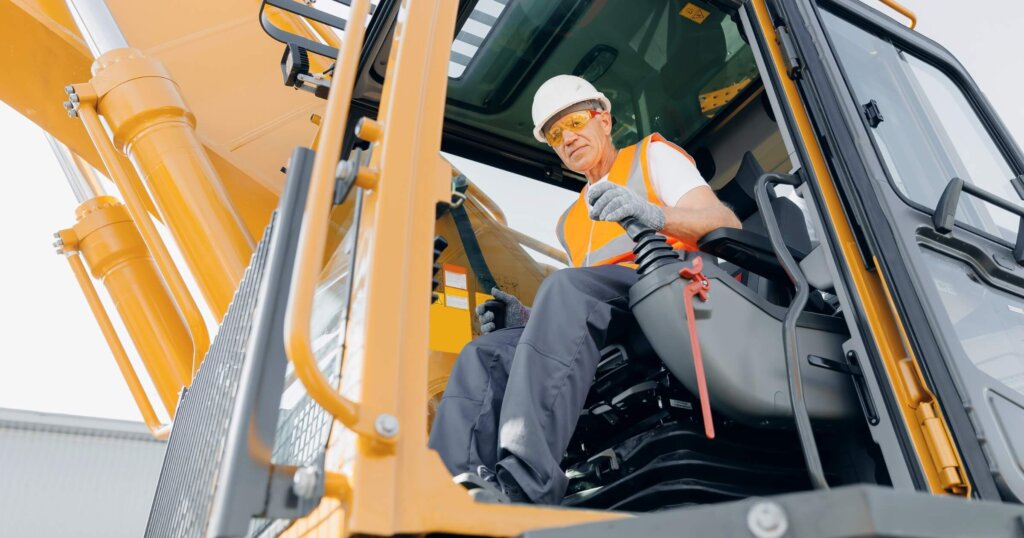
Photo courtesy of Shutterstock.
- Deaths/Fatal incidents per year: ~10–20 (U.S.)
- Common causes of incident: Equipment entrapment, collapses, toxic exposure
Mining machine operators work deep underground or in large open-pit mines, using massive drilling and excavation equipment to extract raw materials like coal, metal ore, and stone. Despite technological advancements that have improved safety, the environment remains inherently dangerous. In 2022, the U.S. Bureau of Labor Statistics reported 14 fatalities among mining machine operators, often caused by equipment entrapment, structural collapses, or exposure to hazardous dust and gases.
These workers must navigate confined spaces with poor visibility, unstable ground, and powerful machines that leave little room for error. Even minor miscalculations can lead to cave-ins, machinery malfunctions, or life-threatening exposure to airborne contaminants, such as silica. Though the industry has made strides in automation and safety training, mining remains one of the most high-risk trades in North America.
What makes trade jobs so dangerous?
It’s often a mix of environmental hazards, equipment risks, and long hours that push workers past their physical limits. That’s why workplace safety can’t just be a poster on the wall; it needs to be a daily practice. According to the Construction Deaths Report, the leading causes of fatalities include falls, struck-by incidents, and contact with equipment. Pair that with widespread fatigue, one of the lesser-addressed issues on worksites, and you have a deadly combination.
In addition to the nature of the job, there is a persistent culture in trades to ignore safety. Workers often see it as a nuisance which puts them at higher risks. While these issues aren’t always true in each career, they are more common than people think.
Bottom line
The most dangerous trade jobs tend to combine physically demanding work, unpredictable environments, and constant interaction with heavy equipment. Whether it’s a logger in the forest or a welder on scaffolding, risk is part of the job, but that doesn’t mean it can’t be managed. Proactive safety training, strong oversight, and a culture of accountability are essential to keeping workers safe. Employers, unions, and tradespeople each play a critical role in reducing injury and fatality rates on worksites.
For more insights into safety and risk management in the trades, check out these resources:
Want more articles on safety, gear, and trade job tips? Subscribe to our newsletter for weekly updates you’ll actually want to read.
